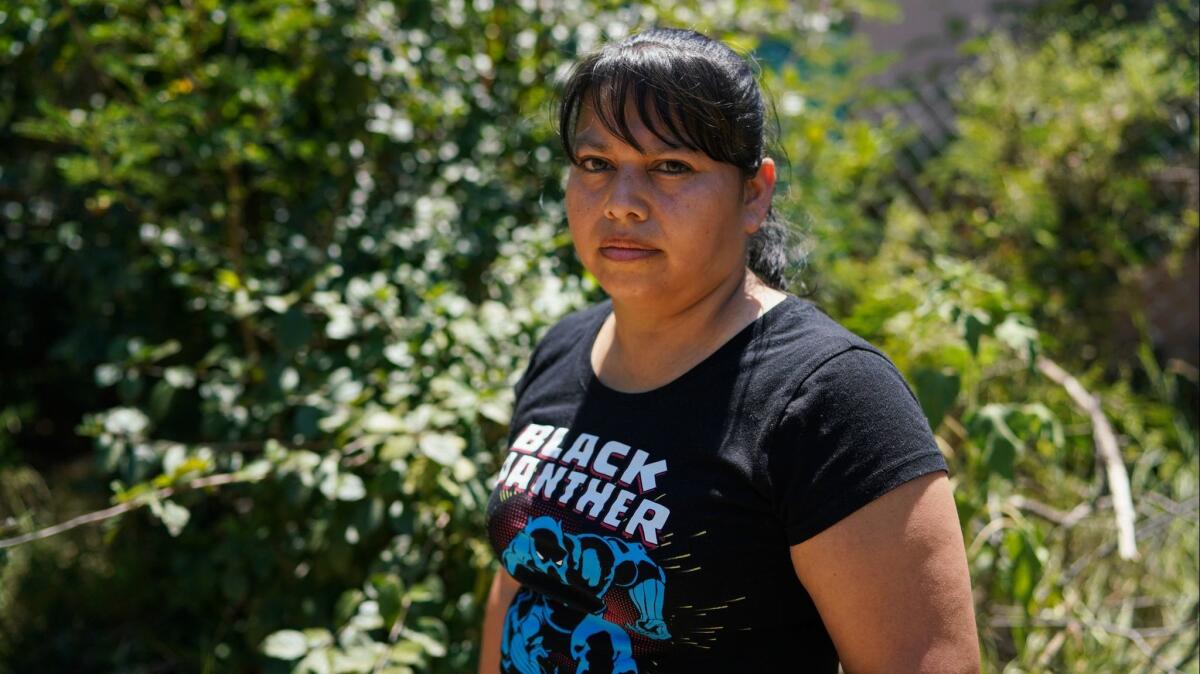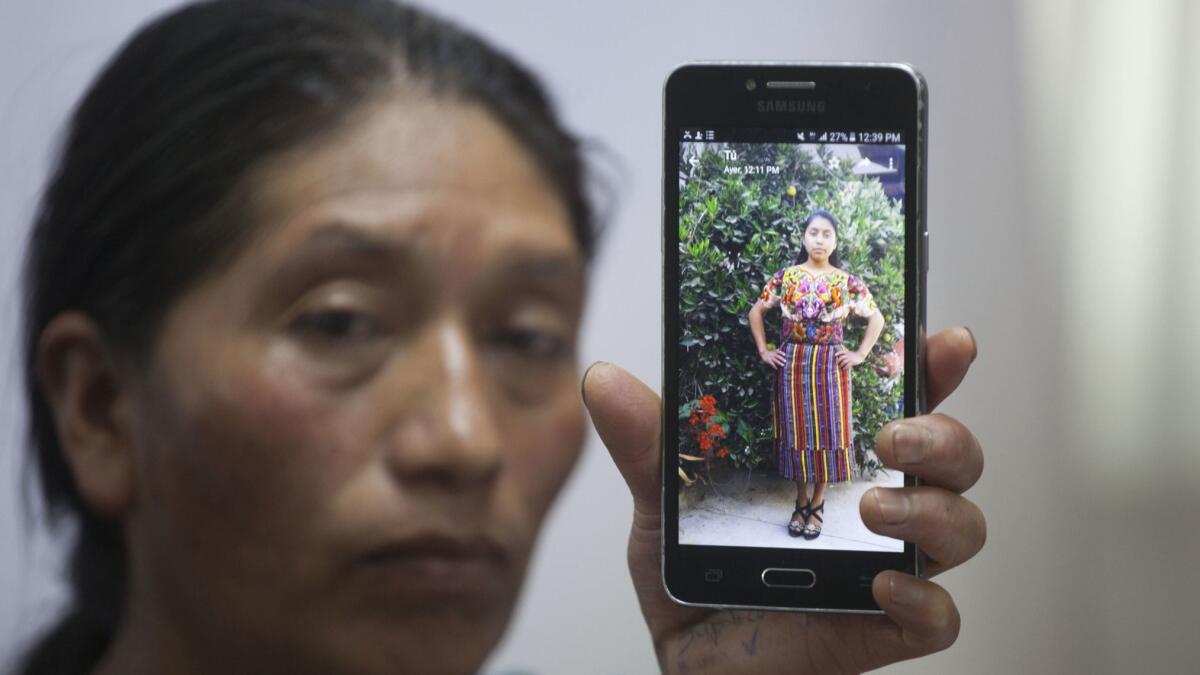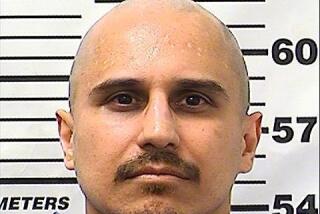Witness recounts fatal Border Patrol shooting of young Guatemalan woman in Texas

Reporting from Rio Bravo, Texas — Marta Martinez was in her bedroom about a mile from the border in south Texas on Wednesday, preparing to attend her son’s end-of-year award ceremony at school, when she heard a gunshot. She told her children to stay inside and rushed out to see a Border Patrol agent with a gun in his hand.
It was not unusual for Martinez, 39, born and raised in the area, to see agents chasing migrants who had crossed the border illegally. But this time, she said, she confronted a gruesome scene: outside her room, the body of a young woman lay bleeding on the ground, shot in the head.
“When I started to film and I saw the woman, I got mad, so I started shouting at the man,” Martinez said.
The shooting in a residential area about 15 miles southeast of Laredo has stirred controversy from south Texas to Central America at a time when President Trump’s administration has vowed to crack down on illegal immigration. U.S. Border Patrol officials initially said the agent fired after migrants attacked him, but backpedaled Friday as the victim’s relatives in Guatemala, Martinez and other border-area residents called for a deeper investigation into the circumstances of the killing.
The agent, a 15-year veteran, was responding to a report of illegal activity near a culvert when he discovered migrants around 12:30 p.m. Wednesday, the Border Patrol said in its initial statement. The statement said the agent fired after being attacked by migrants armed with “blunt objects,” which officials described as “two-by-four” pieces of lumber. The agent then “fatally wounded one of the assailants,” the statement said.
On Friday, the agency released a second statement saying the migrants “rushed” the officer after ignoring orders to get on the ground. The second statement did not mention blunt objects and called the gunshot victim a “member of the group.” The agent, who has not been identified, was placed on administrative leave.
U.S. Customs and Border Protection canceled a news conference about the shooting Friday. An FBI spokeswoman declined to comment due to the ongoing investigation.
Webb County Medical Examiner Corinne Stern and the Guatemalan Ministry of Foreign Affairs identified the shooting victim as Claudia Patricia Gomez Gonzalez, 20, of San Juan Ostuncalco, Guatemala.
Gomez had studied accounting but was unable to find a job and left to work in the U.S. “out of necessity,” her aunt, Dominga Vicente, told reporters in Guatemala City on Friday.
“This is not the first person dying in the United States,” Vicente told Guatevision TV. “There are many people that have been treated like animals, and that isn’t what we should do as people.”
Gomez’s mother, Lidia Gonzalez Vasquez, said she wanted her daughter’s body returned.
“She left home 15 days ago, saying: ‘Mamita, we’re going to go on ahead, I’ll make money. There’s no work here,’” Gonzalez said. “But shamefully they killed her. The migration killed her.”
Carlos Narez, secretary of the National Council for Migrant Assistance in Guatemala, joined Gomez’s relatives at the Friday briefing and called for an “exhaustive, impartial investigation.”
On Saturday, Narez tweeted, “The Border Patrol changes its version and sows doubts about the death of an immigrant.”
Gomez, whose nickname was Princesita, or “Little Princess,” was on her way to Virginia to join her boyfriend, Morales Yosimar, who posted photos of her and expressed his grief on Facebook. She was “assassinated,” he wrote, while trying to make them a couple again.
For those questioning the official account of the shooting, Martinez — the neighbor who saw the aftermath — is a key witness.

Martinez said she often sees the Border Patrol chasing migrants near her home not far from the Rio Grande.
“The river is just 10 or 15 houses away from here. Immigrants just pass by my house running away, scared, trying to hide,” she said Saturday. “They have never knocked on my door. They have never tried to hurt me.… They just run away trying to hide behind trees and the grass. Immigration agents chase them; they run away scared.”
But in her 20 years in the area, “there had never been a chase involving shooting,” she said.
Before emerging from her house Wednesday, Martinez said, she “never heard [the agent] tell her to stop.”
Outside, she began recording with her cellphone and broadcasting on Facebook Live. Martinez said she saw the same agent yell at three young male immigrants, “See what happens? Do you see what you caused?”
“I didn’t think; I just started filming.… I always have my phone at hand; I’m always filming everything. My family always says, ‘Be careful, take away her phone because she is going to film us!’” Martinez said.
But this was her first time filming law enforcement. Several other agents had already arrived.
“The officers were telling me that I could not film,” she recalled. “I told them that I was filming them live, that I was going to expose them on Facebook.”
Martinez watched an officer flip Gomez’s body over and begin chest compressions in a grassy lot. She said it wasn’t clear what the migrants had been doing before the shooting.
“I don’t know if they attacked or not because I didn’t see,” she said — but she didn’t see the migrants armed nor any two-by-fours in the area.
In the video, a uniformed officer can be seen performing chest compressions. The young woman’s face was covered with dirt on one side and blood on the other, Martinez said.
“That’s when I saw that the young lady was not moving,” she said.
Martinez kept filming as the agent captured two men who ran from the scene after the shooting and walked them through a vacant lot. Martinez said she heard the agent say: “This is what happens. You see?”
She said she also heard the agent tell the men, “Be quiet; you have weapons.”
Border Patrol said agents arrested three migrants at the scene who had crossed the border illegally.
Martinez can be heard in the video yelling in Spanish as the officer led the men to his vehicle.
“Why do you mistreat them? Why did you shoot the girl? You killed her. He killed the girl. She’s there. She’s dead. I saw you with the gun!” she yelled.
After the shooting, she noticed Border Patrol agents driving by her family’s house in their green-and-white vehicles, stopping just outside. She later spoke with FBI investigators, and said she trusts they will investigate thoroughly.
Martinez has received hundreds of messages, including from Gomez’s neighbor and cousin, who described her as humble and studious — a good person.
“I hope we get justice. It’s something that should not happen,” she said, adding that she filmed because “it seemed unjust to me, and many times when unjust things happen … people don’t realize” because it’s not on video.
Officials from the Texas branch of the American Civil Liberties Union have called for the shooting to be fully investigated and repeated demands that Border Patrol agents wear body cameras.
Astrid Dominguez, director of the group’s Border Rights Center, said the contradictory Border Patrol statements about Gomez’s shooting highlight “their lack of transparency” and the need for body cameras “so we can actually know what happened.”
“We are extremely concerned about this twist,” Dominguez said Saturday, and worried that the other migrants traveling with Gomez might be deported before they can share what they saw.
“They are key to this investigation,” she said.
Late Saturday, the migrant advocacy group Laredo Immigrant Alliance held a vigil for Gomez in a downtown park, where residents called for not just a thorough investigation, but greater oversight and accountability for the Border Patrol.
“We’ve been seeing a lot more Border Patrol because of all this anti-immigrant narrative that’s going on,” said alliance founder Karina Alvarez, 29, herself a participant in the Deferred Action for Childhood Arrivals program who feels threatened by Trump’s anti-immigrant rhetoric.
She said his description of migrants as “animals and rapists and murderers” trickles down to agents on the border.
“That is ultimately how they see us,” she said. “We see that in this, and this is not an isolated case. This has happened before. The exception to this is that it was videotaped.”
Special correspondent Veronica G. Cardenas contributed to this report.
More to Read
Sign up for Essential California
The most important California stories and recommendations in your inbox every morning.
You may occasionally receive promotional content from the Los Angeles Times.











